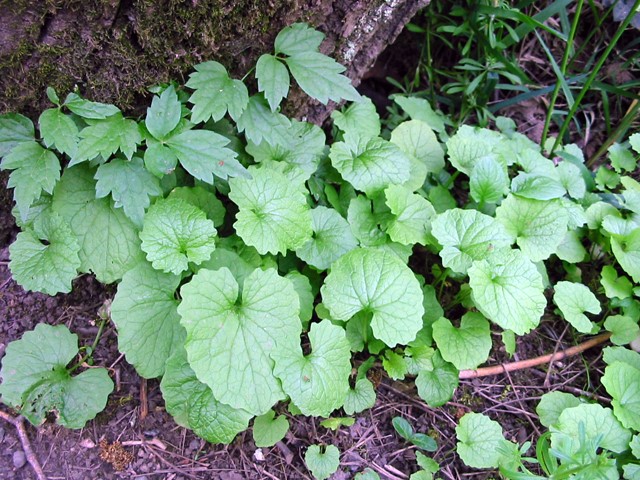2022 County Weed Grant
In recent years, the Yamhill SWCD has led innovative local weed control partnerships to control County Class A weeds that impact the health of local waterways, upland habitat, and land uses of economic importance across Yamhill County. This grant provides funding for surveys, treatment, and outreach for isolated Early Detection/Rapid Response (EDRR) populations of mouse ear hawkweed and garlic mustard, and widespread infestations of Italian thistle and knotweeds. The total proposal area encompasses ~1,335 acres and ~101 gross acres of treatment. The hawkweed is located in one small rural area of the county comprising 1 net acres and is the only known infestation within the western Willamette Valley. Garlic mustard is found in only three locations in the county. These two EDRR weeds are top local priorities for coordinated containment and eradication. Control efforts for knotweeds and Italian thistle will be focused within county Right-of-Ways which are a priority vector for weed spread. This control work will now be led in-house by Yamhill County Public Works and includes 250 miles of county ROW surveys for annual updates to ROW inventory. Outreach will be implemented by partners to provide technical assistance for private lands infestations.
This grant is a collaboration with diverse public and private partners, including the District, Greater Yamhill Watershed Council, Yamhill County, City of McMinnville, and more than 1,000 landowners. The goals of this proposal are a result of recent OSWB-funded 2021 Strategic Planning sessions and the 2020-completed multi-year Yamhill Roads Vegetation Inventory project which surveyed priority invasive weeds across all 700 miles (1,400 lane miles) of County ROW. These recent projects have enabled our partnership to strategically focus weed control resources for 2022 toward EDRR and vector control species, while leveraging each partner’s unique organizational capacities and weed management priorities.
See the Western US Invasive Plant EDRR Weed ID Guide for help identifying weeds on your property.
Target Species
Italian Thistle
Italian Thistle has been found in several infestation locations, particularly around northern Yamhill County. Italian Thistle is a top priority invasive weed we are working to contain and fully eradicate to the best of our ability within Yamhill County. This invasive thistle spreads exclusively by seeds (up to 20,000 seeds per plant) which disperse easily in the wind and can survive in the soil for up to ~7 years. This weed has been found rapidly spreading into pastures and grass fields, vineyard rows, roadsides, and more. Help us track and eradicate this top priority invasive weed.
Italian Thistle can form thickets and seriously effect agricultural production. For more information, see the ODA Weed Profile
Control
Entry from PNW Weed Control Handbook
Excerpt from Weed Control in Natural Areas in the Western United States
Garlic Mustard
Found in Yamhill County in only three known infestation locations (a newly discovered 2021 Baker Creek infestation by Ed Grenfell County Park; Cozine Creek in SW McMinnville, and near Kramien Road outside Newberg), Garlic Mustard is a top priority invasive weed we are working to contain and fully eradicate within Yamhill County. This invasive ground cover spreads incredibly quickly by seed (up to 8,000 seeds per plant, and 100,000+ seeds per square meter infestation) which disperse easily with foot-traffic and floodwaters, and can survive in the soil for up to ~ 10 years. Chemicals released in the soil by this weed also prevent establishment of other vegetation. This weed has completely taken over stream sides and roadways in neighboring counties across Oregon. Help us track and eradicate this top priority invasive weed!
For more information see the ODA Weed Profile
Control
Garlic Mustard Identification and Control
Maps courtesy of Greater Yamhill Watershed Council

Mouse Ear Hawkweed
Mouse-ear hawkweed is a low growing perennial hawkweed with distinctive fuzzy leaves showing white mid-veins. It spreads with stolons like strawberry plants and has a fibrous root system. Yellowish-white flowers are produced on short, leafless stalks that are covered with stiff dark hairs. The flowers resemble those of dandelions. This may explain why the plant is easily overlooked. It prefers to grow in open grassy areas and does not tolerate shade. Currently this is only found on a few properties in Yamhill County.
For more information see the ODA Weed Profile
Control
Entry from PNW Weed Control Handbook
Knotweeds
Found throughout Yamhill County in many known infestation locations, Knotweed varieties are a top priority invasive weed we are working to control within strategic locations, particularly roadsides and floodplain corridors where this invasive plant can spread quickly across large areas. This invasive shrubs spreads incredibly quickly from rhizomes, roots, and sometimes stem fragments (less so by seed), and has completely taken over stream sides and roadways in counties across the State of Oregon. Help us track and eradicate this top priority invasive weed!
For more information see the ODA Weed Profile
Control
Entry from PNW Weed Control Handbook
















